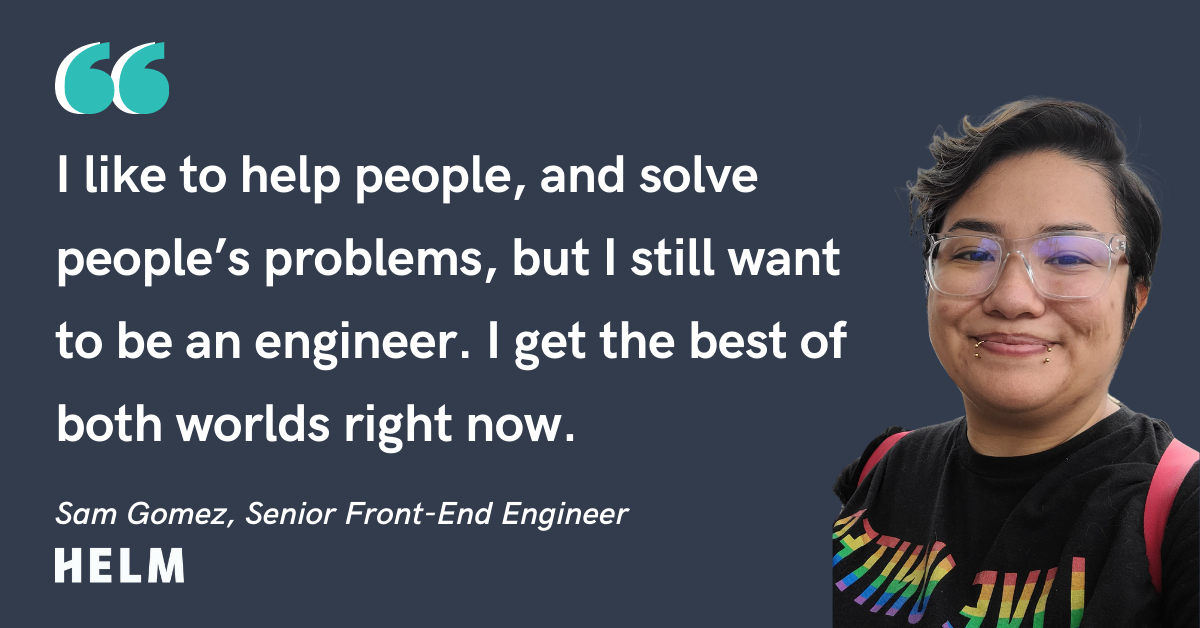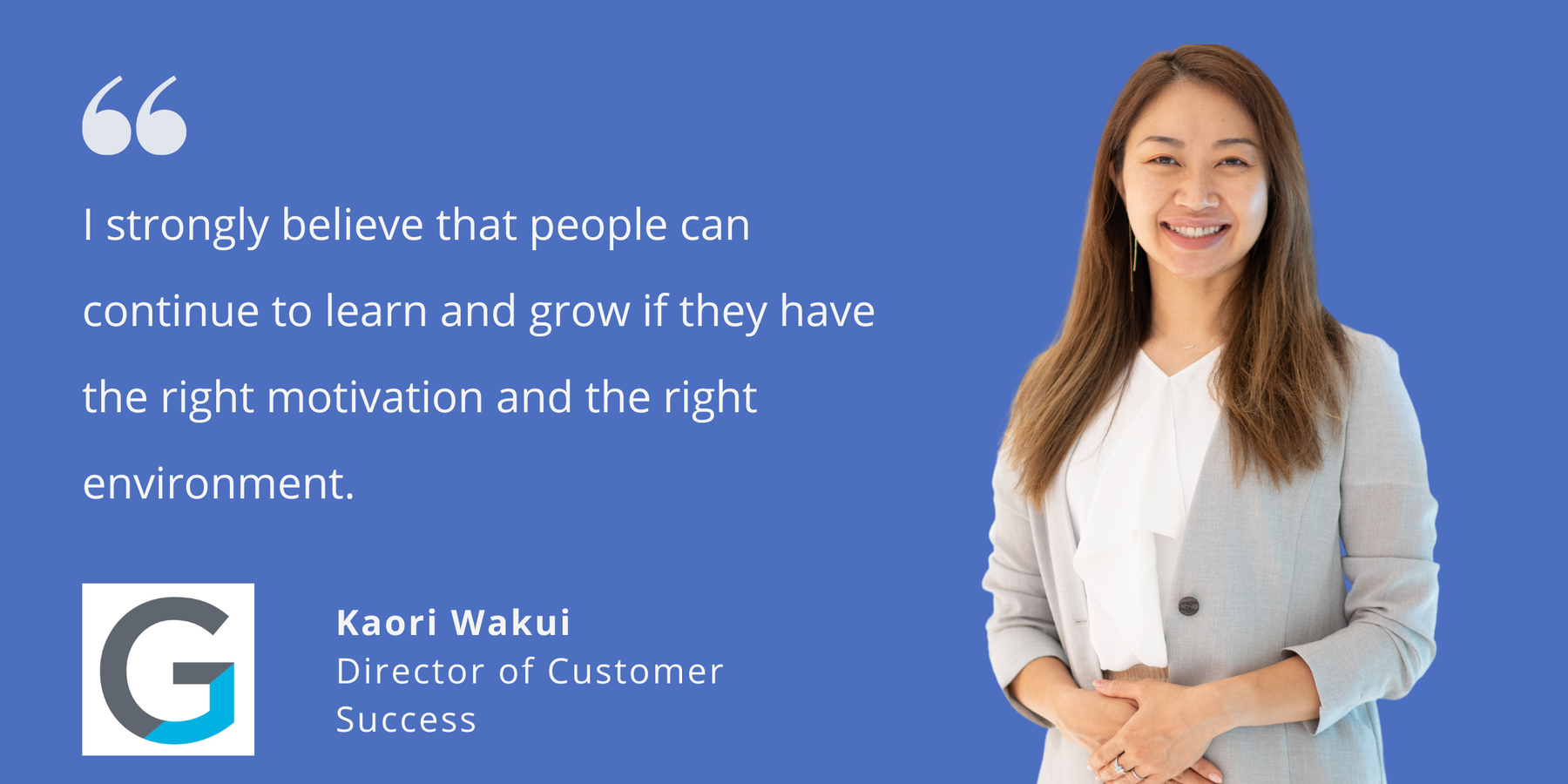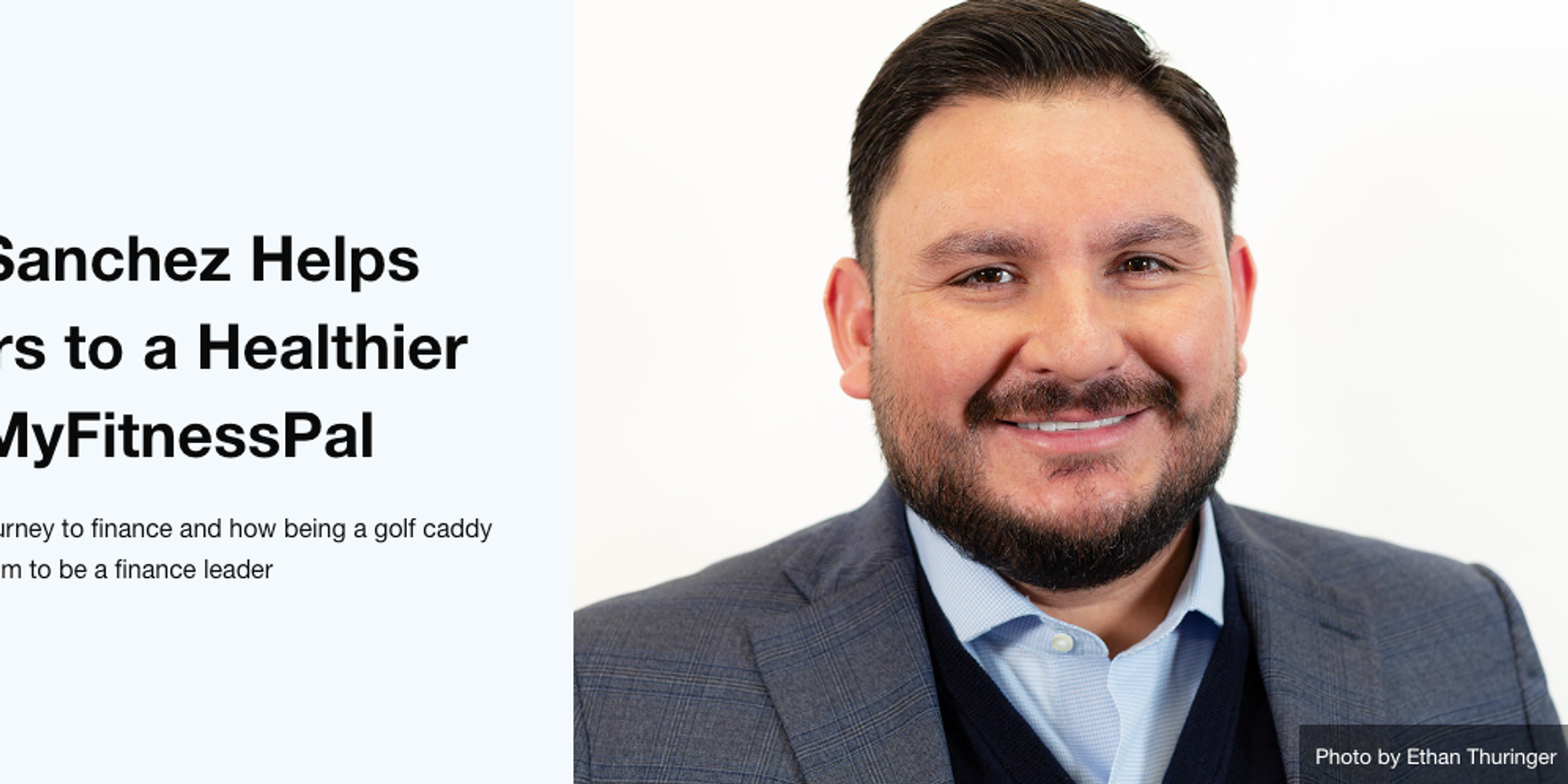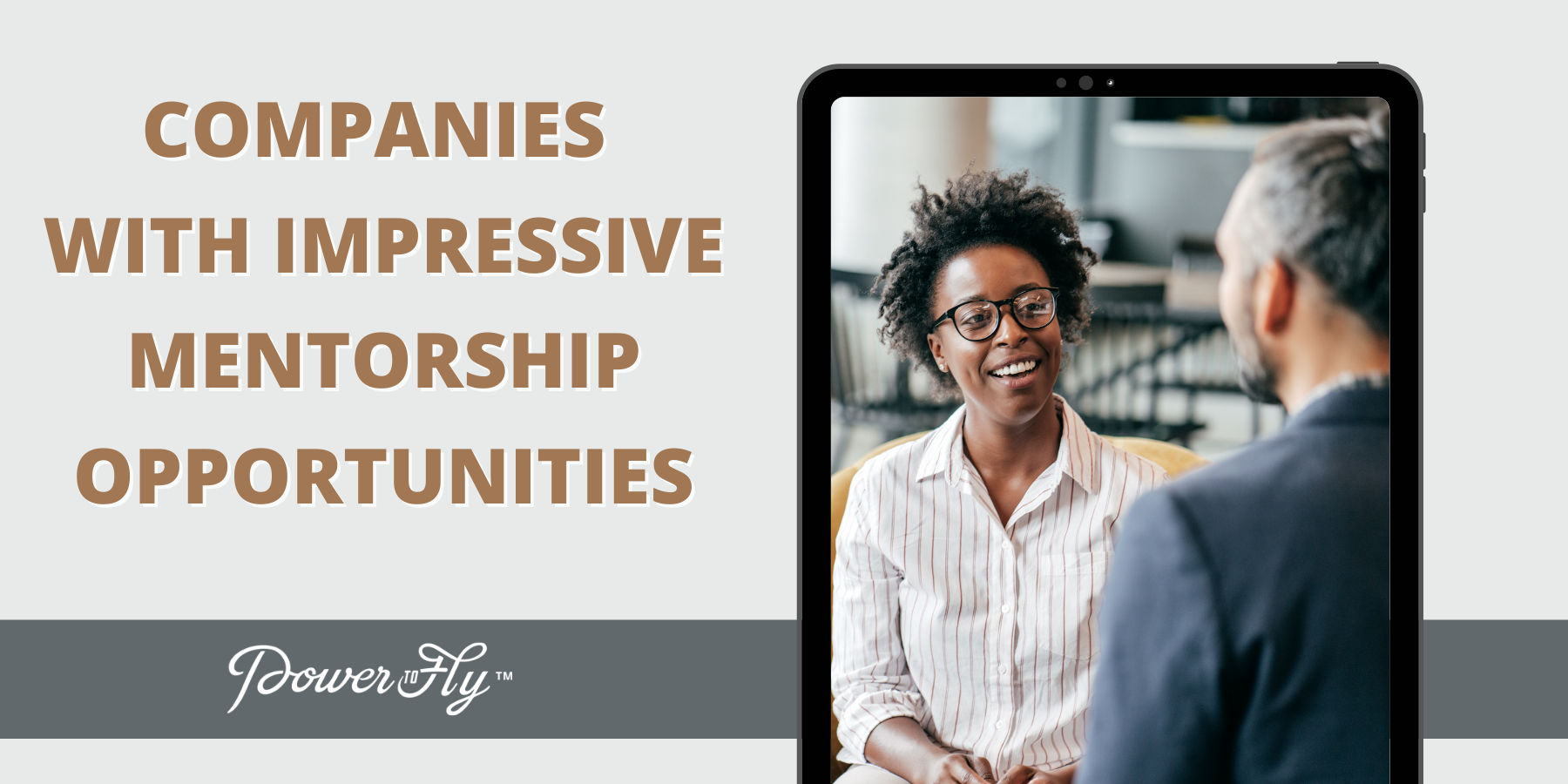You know that scene in Arrested Development where Lucille guessed how much a banana costs (and was wrong by a factor of 50)?
That scene works because it really is what out-of-touch politicians sound like.
And that’s why Sam Gomez believes in supporting local, grassroots leaders through the work she does as a senior frontend engineer at Helm, a data platform for political organizers aimed at creating a more participatory democracy.
“It’s ridiculous when I see politicians try to put a budget plan together and they’re like, ‘Rent, $800.’ It’s like, ‘Where are you getting rent for that?’” she says. “It’s important to support grassroots politicians because those are the people that are us, that are living in our shoes.”
Sam didn’t set out to work in a politics-adjacent field. She didn’t set out to be a leader, either. Both things happened because of the mission and culture at Helm—so we sat down with her to find out more about her journey, as well as what advice she has to share with others looking to also find meaningful paths at work.
From MySpace to Frontend
Sam got into coding by teaching herself HTML and CSS in order to personalize her MySpace page. She loved connecting a few lines of code to an external change that would make her page better reflect her personality.
“I was excited that I was understanding it, so I was like, ‘I wanna do this. I want to make websites for a living,’” she remembers. “That was in middle school. You don’t expect stuff like that to really stick. But it did!”
Her first job out of college was in front end development, which Sam was grateful for. “I’m honestly not sure I would still be in this field if I couldn’t work in the front,” she says. “I had an internship project that was more back-end-oriented and I kind of felt miserable.”
It’s the immediate return on investment that Sam loves about front-end work, she says. “The reward is quicker,” she explains.
Even though Sam had started out working as an individual contributor on the frontend at her last job, she wasn’t feeling very fulfilled. She’d been asked to take on a management role, which had removed her from day-to-day coding and replaced it with endless meetings and responsibilities she wasn’t ready for. “I wasn’t getting the training I needed, and I felt like I was drowning,” she says.
So she started looking for a new role.
Enter Helm
When Sam saw a post from Helm on LinkedIn, she was immediately intrigued. “I’d never worked in the political space before, but when I saw they wanted to help these local-level campaigns and advocacy groups, it almost felt like a calling,” she says. “Like, ‘This is what I want to do. I want to help. I like helping the community, and I feel like this will do that.’”
She applied, and found the interview process “almost too good to be true” because everyone she interacted with was “so nice” and the whole thing was quick and transparent. Sam had applied for an individual contributor role, because she wanted to take a step back from management, and that’s where she started.
A few months in, though, her manager asked her about her career goals during a 1:1, and Sam shared that she’d like to get into management again—with the right support system. From there, she moved to a tech lead position, where she got a feel for making decisions.
It’s been different at Helm, says Sam, because she’s not been thrust into leadership without any guidance. She’s going through training materials with Helm’s Director of People Operations and another coworker, who are putting together sessions on how to manage.
“It shows that they really do care about supporting us and making sure they are setting us up for success,” says Sam, who has found that a mix of coding and management is her calling.
“I like to help people, and solve people’s problems, but I still want to be an engineer. I get the best of both worlds right now,” she says.
Sam now has a few direct reports, and has solidified her transition into a leadership role.
3 Lessons on Moving Into Management
As her career progresses, Sam is racking up hard-earned wisdom about building a meaningful experience at work. She shares some of her favorites with us:
- Stay open-minded to feedback. “I used to take things personally, or get really defensive,” says Sam. “If you’re always in a defensive stance, you’re not going to grow. Now, as a manager, I want my direct reports to trust me and be open.”
- Enjoy the payoff. Sam’s working on a new product, and is making sure to take the time to slow down and celebrate all the hard work she and her team have done to get there. “We know what we’re doing now. It feels so nice, when you’ve been doing all that hard work in the beginning, to see it come to life,” she says.
- Embrace the pendulum. Sam is modeling her path at Helm off of other senior engineers-slash-managers she sees who are also pursuing the best of both worlds. “It’s the pendulum effect: I started out as an engineer, and am working my way up to manager. Once I’m good with that project, I’ll start a new project back as an engineer and work my way up,” she says. “I want to be a really good manager—trusting and empathetic—but I still want to code. I still want to stay up-to-date with the newest trends or best practices or technologies.”
Does working with Helm’s mission and culture sound good to you? Check out their open roles!




